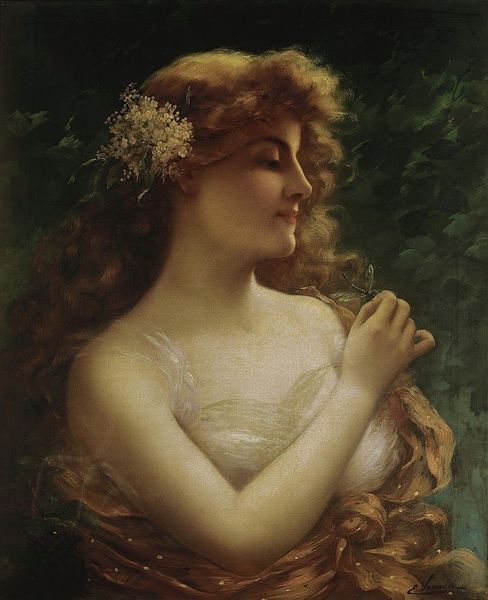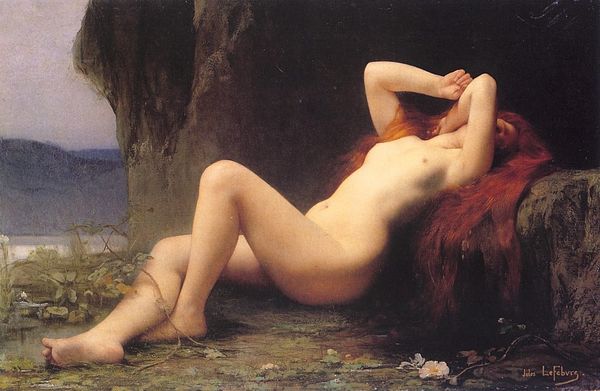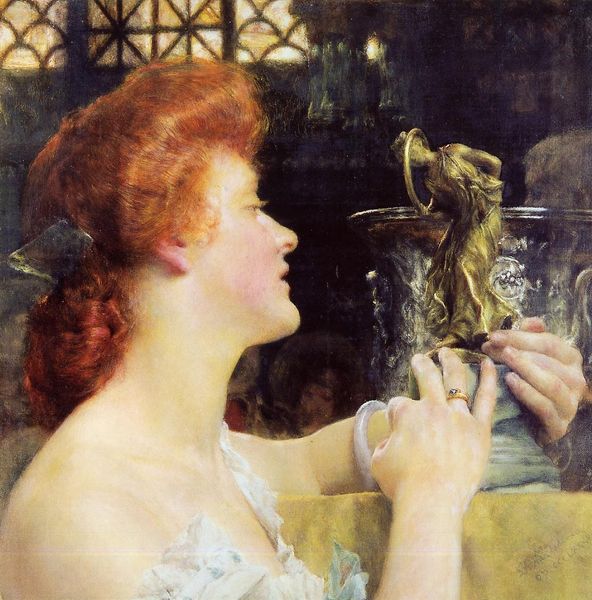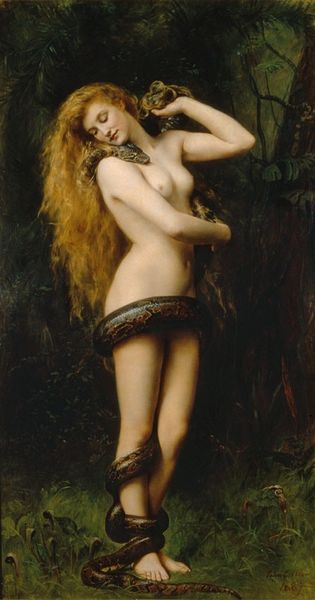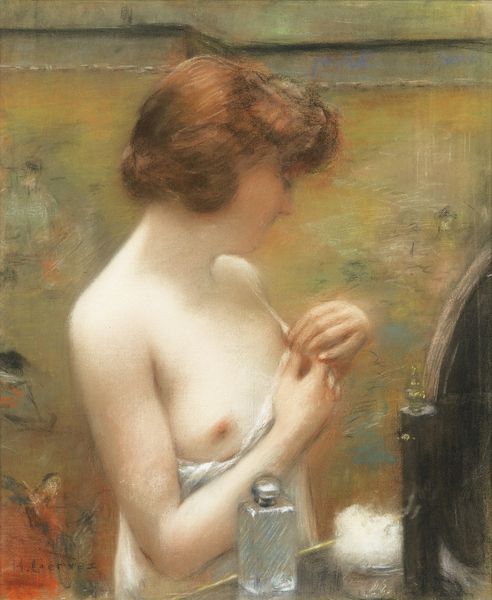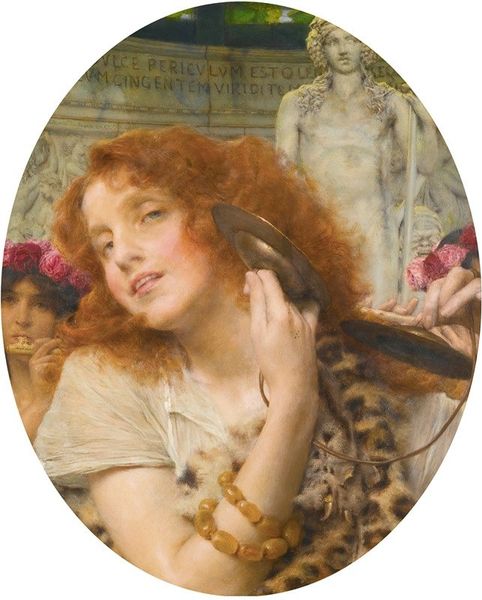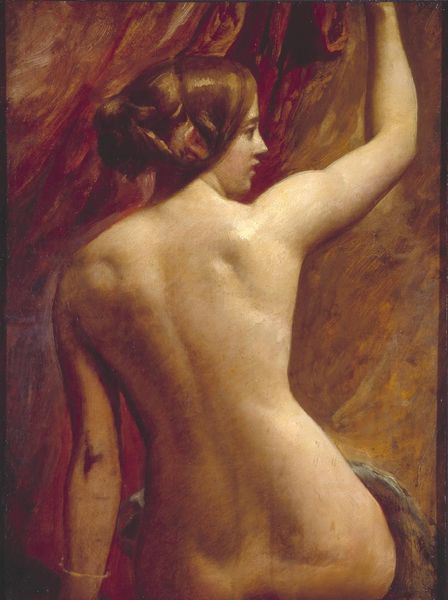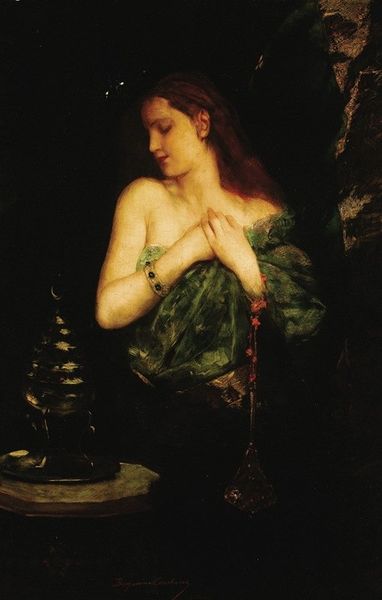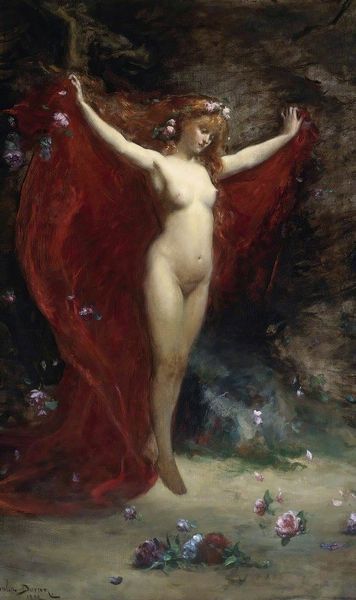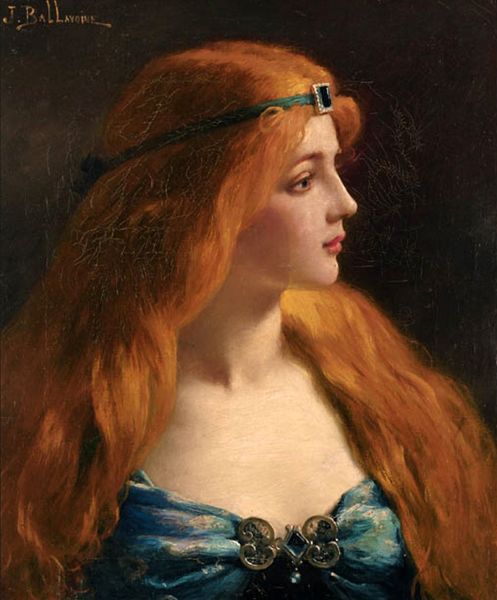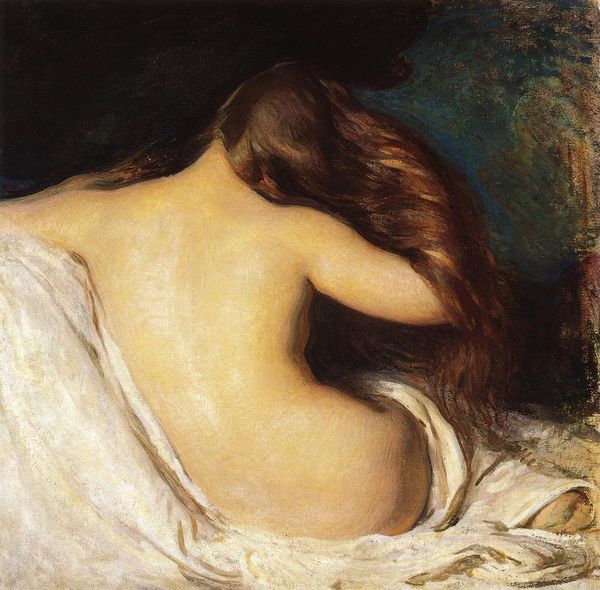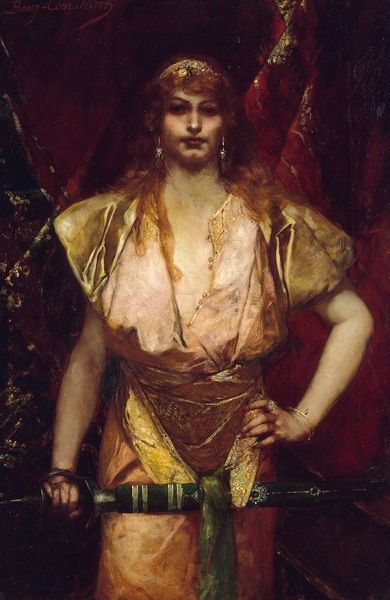
oil-paint
#
portrait
#
impressionism
#
oil-paint
#
intimism
#
facial portrait
#
lady
#
nude
#
portrait art
Copyright: Public domain
Curator: This is Henri Gervex's work, titled "Young Red Head Grooming Herself." We believe this piece uses oil paint, although its exact date of creation is unknown. Editor: Immediately striking is the intimate, almost ethereal quality of the light and the subject's radiant hair. It has the visual language of both reverence and display. Curator: The focus here aligns with the artistic themes of the era. We can trace elements of Impressionism and Intimism that elevated intimate domestic scenes. The painting showcases a societal interest of observing women within private spaces, especially around leisure. Editor: That's quite interesting, especially since a redhead looking into a mirror has strong mythological roots, almost as if Gervex wanted to make a new take on old symbolism. Self-reflection can mirror themes of vanity but is here almost elevated and romanticized through his application of the red hair, lace, and blurred rendering of light. Curator: Gervex was part of a Parisian milieu fascinated with portraying modern life. These nudes within domestic spaces gained acceptance due to cultural trends that found this focus fashionable and, ultimately, marketable. The art world helped create a market, and a style, for images just like these. Editor: It’s interesting how this intimate, introspective moment is itself part of a wider theater of representation and desire, a performance, really. You almost see how her vulnerability has a double meaning, and this is further enforced by her nudity and display, and amplified by a cultural hunger for this imagery at the time. It raises a dialogue: What's the image trying to represent in this era? Curator: And it forces us to continue asking what hasn’t changed. Who does art serve, and how does societal structure drive the very way in which images come into being? I am so glad that, even implicitly, we were able to discuss its production to even its value system as well. Editor: Absolutely. I think it brings a nice added layer to understand its symbolism to consider the larger conversation of display, objectification, cultural themes and norms that drive both its creation and even meaning of "art" today.
Comments
No comments
Be the first to comment and join the conversation on the ultimate creative platform.
